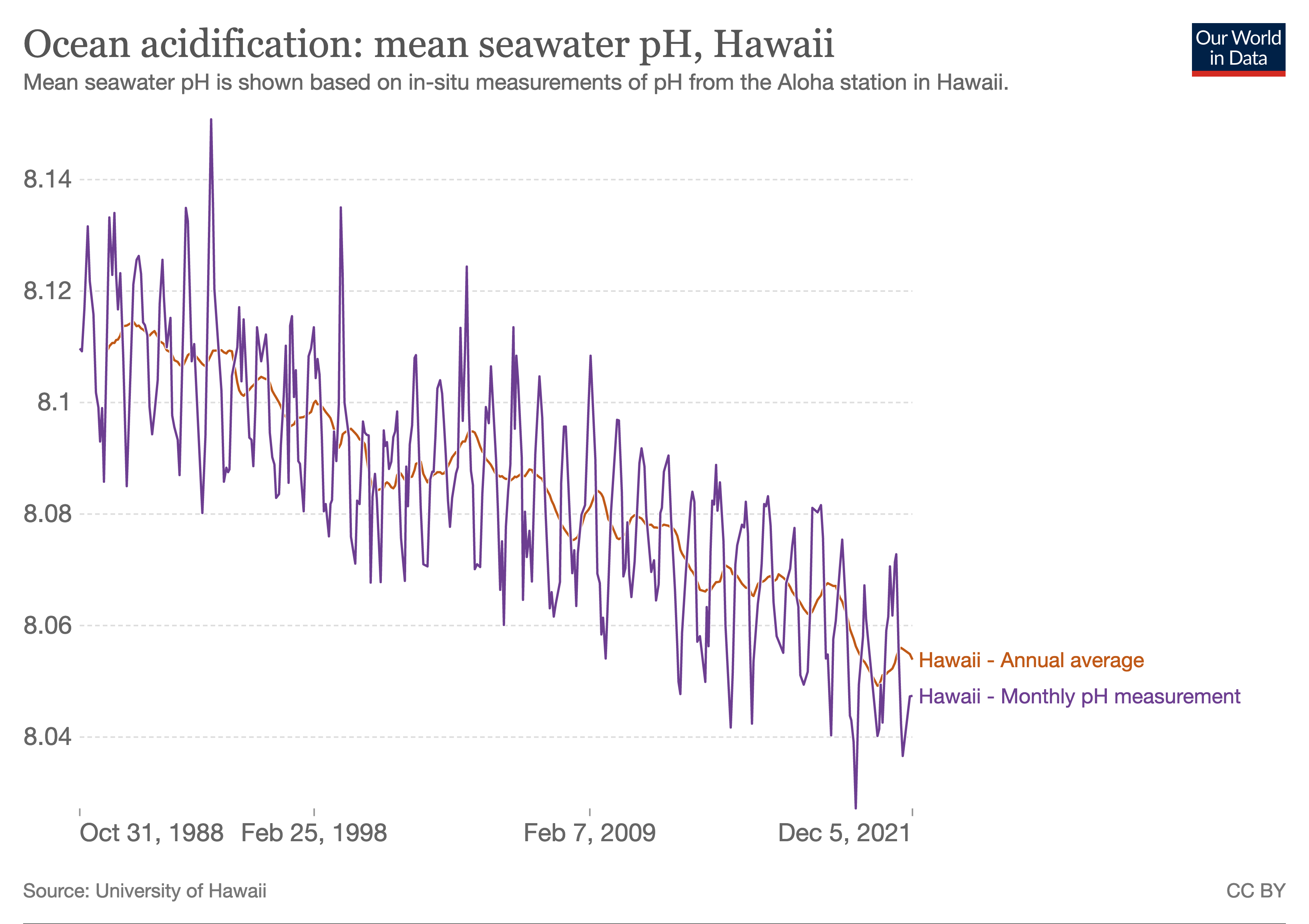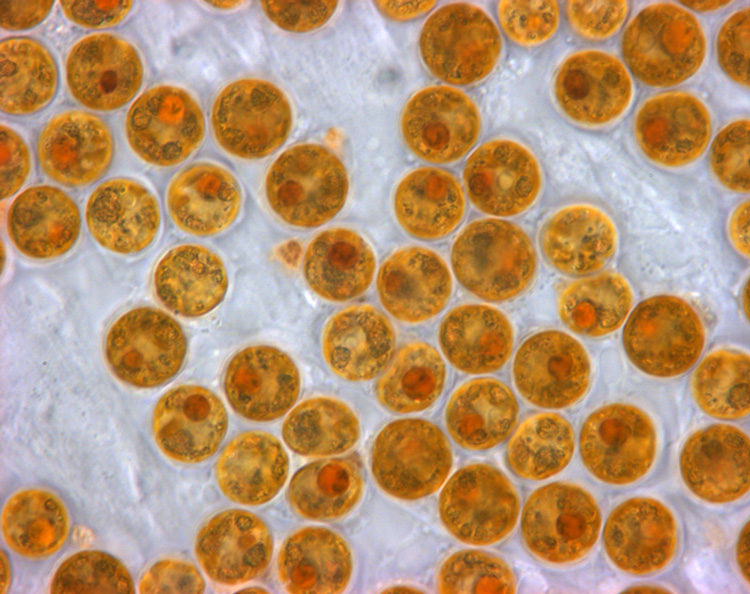|
Coral Bleaching
Coral bleaching is the process when corals become white due to loss of Symbiosis, symbiotic algae and Photosynthesis, photosynthetic pigments. This loss of pigment can be caused by various stressors, such as changes in water temperature, light, salinity, or nutrients. A bleached coral is not necessarily dead, and some corals may survive. However, a bleached coral is under stress, more vulnerable to starvation and disease, and at risk of death. The leading cause of coral bleaching is Effects of climate change on oceans, rising ocean temperatures due to climate change. Bleaching occurs when coral polyp (zoology), polyps expel the zooxanthellae (dinoflagellates commonly referred to as algae) that live inside their tissue, causing the coral to turn white. The zooxanthellae are Photosynthesis, photosynthetic, and as the water temperature rises, they begin to produce reactive oxygen species. This is Toxicity, toxic to the coral, so the coral expels the zooxanthellae. Since the zooxant ... [...More Info...] [...Related Items...] OR: [Wikipedia] [Google] [Baidu] [Amazon] |
Coral
Corals are colonial marine invertebrates within the subphylum Anthozoa of the phylum Cnidaria. They typically form compact Colony (biology), colonies of many identical individual polyp (zoology), polyps. Coral species include the important Coral reef, reef builders that inhabit tropical oceans and secrete calcium carbonate to form a hard skeleton. A coral "group" is a colony of very many cloning, genetically identical polyps. Each polyp is a sac-like animal typically only a few millimeters in diameter and a few centimeters in height. A set of tentacles surround a central mouth opening. Each polyp excretes an exoskeleton near the base. Over many generations, the colony thus creates a skeleton characteristic of the species which can measure up to several meters in size. Individual colonies grow by asexual reproduction of polyps. Corals also breed sexually by spawning: polyps of the same species release gametes simultaneously overnight, often around a full moon. Fertilized eggs form ... [...More Info...] [...Related Items...] OR: [Wikipedia] [Google] [Baidu] [Amazon] |
Ocean Acidification
Ocean acidification is the ongoing decrease in the pH of the Earth's ocean. Between 1950 and 2020, the average pH of the ocean surface fell from approximately 8.15 to 8.05. Carbon dioxide emissions from human activities are the primary cause of ocean acidification, with Carbon dioxide in Earth's atmosphere, atmospheric carbon dioxide () levels exceeding 422 ppm (). from the atmosphere is absorbed by the oceans. This chemical reaction produces carbonic acid () which dissociates into a bicarbonate ion () and a hydrogen ion (). The presence of free hydrogen ions () lowers the pH of the ocean, increasing acidity (this does not mean that seawater is acidic yet; it is still alkaline, with a pH higher than 8). Marine biogenic calcification, Marine calcifying organisms, such as Mollusca, mollusks and corals, are especially vulnerable because they rely on calcium carbonate to build shells and skeletons. A change in pH by 0.1 represents a 26% increase in hydrogen ion concentration in the ... [...More Info...] [...Related Items...] OR: [Wikipedia] [Google] [Baidu] [Amazon] |
Coral Reef
A coral reef is an underwater ecosystem characterized by reef-building corals. Reefs are formed of colonies of coral polyps held together by calcium carbonate. Most coral reefs are built from stony corals, whose polyps cluster in groups. Coral belongs to the class Anthozoa in the animal phylum Cnidaria, which includes sea anemones and jellyfish. Unlike sea anemones, corals secrete hard carbonate exoskeletons that support and protect the coral. Most reefs grow best in warm, shallow, clear, sunny and agitated water. Coral reefs first appeared 485 million years ago, at the dawn of the Early Ordovician, displacing the microbial and sponge reefs of the Cambrian. Sometimes called ''rainforests of the sea'', shallow coral reefs form some of Earth's most diverse ecosystems. They occupy less than 0.1% of the world's ocean area, about half the area of France, yet they provide a home for at least 25% of all marine species, including fish, mollusks, worms, crustaceans, ... [...More Info...] [...Related Items...] OR: [Wikipedia] [Google] [Baidu] [Amazon] |
Zooxanthellae
Zooxanthellae (; zooxanthella) is a colloquial term for single-celled photosynthetic organisms that are able to live in symbiosis with diverse marine invertebrates including corals, jellyfish, demosponges, and nudibranchs. Most known zooxanthellae are in the dinoflagellate genus '' Symbiodinium'', but some are known from the genus '' Amphidinium'', and other taxa, as yet unidentified, may have similar endosymbiont affinities. "Zooxanthella" was originally a genus name (meaning literally "little yellow animal") given in 1881 by Karl Brandt to '' Zooxanthella nutricula'' (a mutualist of the radiolarian '' Collozoum inerme'') which has been placed in the Peridiniales. Another group of unicellular eukaryotes that partake in similar endosymbiotic relationships in both marine and freshwater habitats are green algae zoochlorellae. Zooxanthellae are photosynthetic organisms, which contain chlorophyll a and chlorophyll c, as well as the dinoflagellate pigments peridinin and diadi ... [...More Info...] [...Related Items...] OR: [Wikipedia] [Google] [Baidu] [Amazon] |
Climate Change Threats To Coral Reefs
Climate is the long-term weather pattern in a region, typically averaged over 30 years. More rigorously, it is the mean and variability of meteorological variables over a time spanning from months to millions of years. Some of the meteorological variables that are commonly measured are temperature, humidity, atmospheric pressure, wind, and precipitation. In a broader sense, climate is the state of the components of the climate system, including the atmosphere, hydrosphere, cryosphere, lithosphere and biosphere and the interactions between them. The climate of a location is affected by its latitude, longitude, terrain, altitude, land use and nearby water bodies and their currents. Climates can be classified according to the average and typical variables, most commonly temperature and precipitation. The most widely used classification scheme is the Köppen climate classification. The Thornthwaite system, in use since 1948, incorporates evapotranspiration along with temperature ... [...More Info...] [...Related Items...] OR: [Wikipedia] [Google] [Baidu] [Amazon] |
Coral Bleaching
Coral bleaching is the process when corals become white due to loss of Symbiosis, symbiotic algae and Photosynthesis, photosynthetic pigments. This loss of pigment can be caused by various stressors, such as changes in water temperature, light, salinity, or nutrients. A bleached coral is not necessarily dead, and some corals may survive. However, a bleached coral is under stress, more vulnerable to starvation and disease, and at risk of death. The leading cause of coral bleaching is Effects of climate change on oceans, rising ocean temperatures due to climate change. Bleaching occurs when coral polyp (zoology), polyps expel the zooxanthellae (dinoflagellates commonly referred to as algae) that live inside their tissue, causing the coral to turn white. The zooxanthellae are Photosynthesis, photosynthetic, and as the water temperature rises, they begin to produce reactive oxygen species. This is Toxicity, toxic to the coral, so the coral expels the zooxanthellae. Since the zooxant ... [...More Info...] [...Related Items...] OR: [Wikipedia] [Google] [Baidu] [Amazon] |
The Optical Feedback Loop Driving Colourful Coral Bleaching
''The'' is a grammatical article in English, denoting nouns that are already or about to be mentioned, under discussion, implied or otherwise presumed familiar to listeners, readers, or speakers. It is the definite article in English. ''The'' is the most frequently used word in the English language; studies and analyses of texts have found it to account for seven percent of all printed English-language words. It is derived from gendered articles in Old English which combined in Middle English and now has a single form used with nouns of any gender. The word can be used with both singular and plural nouns, and with a noun that starts with any letter. This is different from many other languages, which have different forms of the definite article for different genders or numbers. Pronunciation In most dialects, "the" is pronounced as (with the voiced dental fricative followed by a schwa) when followed by a consonant sound, and as (homophone of the archaic pronoun ''thee'') ... [...More Info...] [...Related Items...] OR: [Wikipedia] [Google] [Baidu] [Amazon] |
Persian Gulf
The Persian Gulf, sometimes called the Arabian Gulf, is a Mediterranean seas, mediterranean sea in West Asia. The body of water is an extension of the Arabian Sea and the larger Indian Ocean located between Iran and the Arabian Peninsula.United Nations Group of Experts on Geographical NameWorking Paper No. 61, 23rd Session, Vienna, 28 March – 4 April 2006. accessed 9 October 2010 It is connected to the Gulf of Oman in the east by the Strait of Hormuz. The river delta of the Shatt al-Arab forms the northwest shoreline. The Persian Gulf has many fishing grounds, extensive reefs (mostly rocky, but also Coral reef, coral), and abundant pearl oysters, however its ecology has been damaged by industrialization and oil spills. The Persian Gulf is in the Persian Gulf Basin, which is of Cenozoic origin and related to the subduction of the Arabian plate under the Zagros Mountains. The current flooding of the basin started 15,000 years ago due to sea level rise, rising sea levels of ... [...More Info...] [...Related Items...] OR: [Wikipedia] [Google] [Baidu] [Amazon] |
Northern Hemisphere
The Northern Hemisphere is the half of Earth that is north of the equator. For other planets in the Solar System, north is defined by humans as being in the same celestial sphere, celestial hemisphere relative to the invariable plane of the Solar System as Earth's North Pole. Due to Earth's axial tilt of 23.439281°, there is a seasonal variation in the lengths of the day and night. There is also a seasonal variation in temperatures, which lags the variation in day and night. Conventionally, winter in the Northern Hemisphere is taken as the period from the December solstice (typically December 21 UTC) to the March equinox (typically March 20 UTC), while summer is taken as the period from the June solstice through to the September equinox (typically on 23 September UTC). The dates vary each year due to the difference between the calendar year and the Year#Astronomical years, astronomical year. Within the Northern Hemisphere, oceanic currents can change the weather patterns that aff ... [...More Info...] [...Related Items...] OR: [Wikipedia] [Google] [Baidu] [Amazon] |
Oceanic Basin
In hydrology, an oceanic basin (or ocean basin) is anywhere on Earth that is covered by seawater. Geologically, most of the ocean basins are large Structural basin, geologic basins that are below sea level. Most commonly the ocean is divided into basins following the continents distribution: the Atlantic Ocean, North and South Atlantic (together approximately 75 million km2/ 29 million mi2), Pacific Ocean, North and South Pacific (together approximately 155 million km2/ 59 million mi2), Indian Ocean (68 million km2/ 26 million mi2) and Arctic Ocean (14 million km2/ 5.4 million mi2). Also recognized is the Southern Ocean (20 million km2/ 7 million mi2). All ocean basins collectively cover 71% of the Earth's surface, and together they contain almost 97% of all water on the planet. They have an average depth of almost 4 km (about 2.5 miles). Definitions of boundaries Boundaries based on continents ''"Limits of Oceans and Seas"'',International Hydrographic ... [...More Info...] [...Related Items...] OR: [Wikipedia] [Google] [Baidu] [Amazon] |
2023–2025 Global Coral Bleaching Event
The 2023–2025 global coral bleaching event is an ongoing environmental disaster that represents the most extensive coral bleaching incident in recorded history, affecting approximately 84% of the Earth's coral reef ecosystems. Announced by the International Coral Reef Initiative (ICRI) in April 2025, the event was the fourth global bleaching event officially documented, and surpassed the previous 2014–17 event, which impacted roughly two-thirds of global reefs. Coral reefs in the territories of at least eighty-two nations suffered enough thermal stress to undergo bleaching. The ongoing event, which began in February 2023, has been primarily attributed to escalating ocean temperatures associated with anthropogenic climate change, with marine researchers stating that there was no clear indication of when it might conclude. Background Coral bleaching occurs when environmental stressors, particularly elevated ocean temperatures, disrupt the symbiotic relationship between c ... [...More Info...] [...Related Items...] OR: [Wikipedia] [Google] [Baidu] [Amazon] |







